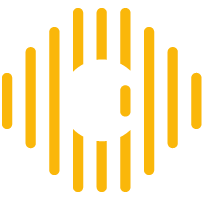Appearance
Release 2.4.0 (February 04, 2025)
Authentication updates
We have made significant changes behind the scenes to how you authenticate with Kurloo. As part of this update, two-factor authentication (2FA) is now mandatory for accessing the Kurloo Nest. This has always been optionally available, but going forward it is now compulsory.
When logging into the Kurloo Nest or Kurloo App, you will now need to provide a unique 6 digit code along with your username and password. By default the code will be sent to your registered email address, but you can also switch to a software token through your user profile if desired. That will allow you to use third party apps such as Google Authenticator, Microsoft Authenticator, Authy, or many others.
As a result of the authentication change, YOU MUST CHANGE YOUR PASSWORD. When you log in for the first time after the 2.4.0 release, you will be prompted to update your password. This process will include verifying a 2FA code sent to your registered email address. Please contact Kurloo support if you have any issues with the process.
Independent security audit
Kurloo engaged an external, independent security expert to conduct comprehensive penetration testing of the Kurloo Nest and APIs.
All identified issues have been resolved, ensuring the Kurloo Nest meets industry best practices for security. Protecting your data is our top priority, and we remain committed to maintaining your privacy and security.
Kurloo API
Kurloo are pleased to announce the release of our API, allowing you to access your data through code for integration into 3rd party tools. API keys can be generated by clicking on your profile in the bottom left corner and selecting the "Manage API keys" option, and documentation is available at https://docs.kurloo.io/api-reference.
Performance Improvements
Kurloo has introduced several performance enhancements to the Kurloo Nest, resulting in significantly faster load times, especially for long-running projects with a large number of sensors.
Persistent Sensor Reference Date
By default the first reading is used as the reference reading for a sensor. You could always change the reference date dynamically on charts, but now you are able to permanently set a different date as the reference. For users with Project Admin or Account Admin permission, open the Sensor Details tab, edit the Sensor, and you can save a reference date.
Reference Displacement Data
The displacement of reference devices is now not shown by default. Kurloo reference devices are processed against the nearest CORS station and are predominantly used internally by Kurloo staff to assess it's stability long term. In some locations though the baseline length between the Kurloo reference and the nearest CORS can be 10s or even 100s of kilometres in very remote areas, causing large uncertainty in the reference measurement.
As a result, we have hidden the reference displacement by default to reduce undue concern from users. By default now the reference position and its telemetry such as battery life are visible, but its displacement data. Rest assured though that nothing has changed in how we process data, and you can still choose to view the reference displacement data using the "Display reference stations data" setting in the "Preference tab" of the project settings should you wish to.
